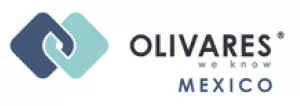Communication to the public is on the bundle of copyrights. It implies that works disembody for the purpose of dissemination to an audience that is present or distant from where the communication act is made. A work subject's communication vanishes instantly after the act finishes, although it can be re-embodied, especially if communication consisted in an emission or transmission.
The scope of communication to the public is wide enough to encompass activities like:
- "public performance" of works such as drama, dance or music, that are directly and immediately "interpreted", "danced", "acted", "played", "characterized", "recited" or "disserted", in a scenario and before an audience and without employing devices or equipment disseminates them;
- "public performance" of drama, dance or music works that have been previously recorded and then played by utilizing equipment, including a radio receiver or a player;
- "public display" of fine or similar visual arts, which are directly presented to a public, without a device or equipment;
- "public exhibition" or "projection" of films or other audiovisual works, in theaters or places where they can be projected with proper equipment;
- "broadcasting" of radio or television works, with dissemination equipment that enables their emission – by air or satellite-, transmission – by cable – or retransmission.
Works disseminate in digital networks in virtue of "transmission", which includes streaming as its principal form. They also disseminate through digital networks by upload, generally onto a website connected to digital networks like Internet. Likewise, works disseminate in digital networks by making available.
Together, making available, reproduction and transmission make the rights necessary to protect digital copyrights. During the past years, it has been discussed at a judicial, legislative and scholar level, whether linking fits the making available description and as a result, can be a form of communication to the public.
In order to qualify for copyright protection, works that are the subject of communication need to address the public. Private communications, including those made for private purposes, like a family or group of friends, are simply excluded from copyright law. Laws have provided different definitions of "public", but they have in common the idea of a plurality of persons. Accordingly, it is "public" when people are generally related to a community or society. Examples of the foregoing are audiences of performed works or of broadcasts, who watch or hear them be played. The German UhrG considers as public a communication that is intended for a group of several members of the public as anyone who does not have a personal relationship either to the exploiter of the work or to a person to whom the work is being made perceivable or accessible.
The right of communication to the public has been analyzed a number of times under the Berne Convention, adding provisions as it is reviewed. In that regard:
- article 11 of the original treaty recognized public performance of dramatic, dramatic-musical and musical works;
- article 11 of the Act of Rome of 1928, added broadcasting by means of radio or TV, with or without wire and without record of the work, as well as communication to the public by transmission to radio receivers;
- article 11ter, added by virtue of the Brussels Act of 1948, set a right of public recital of literary works,
- article 14, Act of Berlin of 1908, addressed for the first time exhibition to the public and diffusion by TV, of films as well as the rights granted for other works and that apply to films.
The World Copyright Treaty (WCT) broadened the spectrum of rights of communication to the public, adding in favor of authors the right of making available (article 8). Despite the Berne Convention's standard norms, it has not been easy to harmonize the meaning of communication to the public. The Rome Convention and other treaties sometimes define or classify it differently, same as the domestic laws of countries in world.
Authors, performers and phonogram producers hold a right of making available as an exclusive right to control access to works from the moment that they are offered to users not for reading, viewing or hearing, but for copying or transmitting, in particular when it is not a lawfully authorized copy of a work that is offered.
It relates to the communication to the public of works when applied to on-demand transmissions. The requirement of access "from a place and time individually chosen by members of the public" has to do with the nature of Internet, where the user having the means to connect takes control as opposed to broadcasting that stays with the broadcaster. Internet communications are not simultaneous as in broadcasting but are rather successive, inasmuch as the public receives works after having chosen and requested them from the website operator. Works are made available to the public when uploaded onto websites and the public has access thereto as a result of the upload. Likewise, works already in a website can be made available.
Making available has provided a solution to the problem of unauthorized use of works on the Internet, since reproduction and other forms of public communication cannot help alone. It has pulled the spectrum of communication to the public to the moment when the work has been offered to users and not when it is transmitted. Users are the people who will ultimately read, see or hear the work. Nobody can be impeded getting access to information, including copyrighted works. The legal theory finds a difference between "access right" and "right-of-access". Access right protects copyright holders against those making works available to the public, whereas right-of-access regards human rights that ensure that the public has safe entry to information, including copyrighted works.
The "access right" grants the holder with the capacity to prohibit that means are provided for the trespassing of her property, specifically her intellectual property. Accordingly, the prevention scheme targets the person giving access and not those persons who get the access. By exercising the right of making available, copyright holders can rely on technical measures like DRMs or TPMs, the circumvention of which is forbidden, since that would precisely be a form of making works available to the public.
Right-of-access protects the people who have not created works or produced information, but is the recipient thereof who reads, views, or hears the works or the information. Protection is against the abuse or misuse of the power someone may have by possessing the works or information and that attempt to the rights or interests of the addressees. By no means could it be considered that copyright holders exercising their rights would ab initio be abusive of their rights. Misuse would require a conduct going beyond the statement of holding and exercising rights; for example, the creation of a barrier to prevent to information in a lawful fashion. The making available right could eventually be the subject of copyright exceptions or limitations or of rules of fair dealing or fair use. So far there are no such restrictions under international treaties, apart from the three-step-test or the specific exceptions of the Berne Convention. On the other hand, human rights of access or free speech in some manner perform as exceptions to copyrights.
In recent years, a question has been raised asking if making available extends to the linking of websites holding copyrighted works. The issue is that, by being linked, works uploaded onto websites can be made available to the public. Linking is a broad notion that encompasses hyperlinking to the first or initial page in a website; deep linking; framing; and embedding. The forms of linking share in common that they all send users from one website to another, but have variations depending on factors principally related with the chance that users activate the link –as it happens with an hyperlink or deep linking- or the link is produced automatically from one website to another, allowing works residing in the former be viewed in the latter –as it happens in framing or embedding.
The European Court of Justice (ECJ) has resolved three cases regarding linking to copyrighted works. Svensson (Nils Svensson et al v. Retriever Svergige AB. C-466/12), is the first case resolved by the ECJ addressing whether linking – specifically deep linking- may represent an act of making available and hence a communication to the public. Retriever Sverige had a website with hyperlinks to other websites, including the one where some articles had been lawfully uploaded. The ECJ analyzed that in order to be regarded communication to the public, the link needs to redirect to a new public that is different to the public to which the work was originally directed.
In Best Water (Best Water International GmbH v. Michael Mebes and Stefan potsch. C-348/13), The ECJ confirms the criterion of Svenson, but with regard to framing, by which a work is shown giving the impression that is within the linked website, although it comes from a different one. Accordingly, framing can be a form of making works available and consequently, of communication to the public – a new public. The discussion is still going at the German courts based on the lawful or unlawful character of the original upload in YouTube of a given video.
In GS Media GS Media BV v. Sanoma Media Netherlands BV et al. C-160/15, the ECJ has added to the requirement of new public that the linker intends a profit and that she knows about the unlawful character of the link. However, the added conditions have been criticized as affecting copyright holders, as a question referenced to the gravity of an infringement and not the agreement as such.
Similar cases have been decided in countries like Mexico. In particular, the Mexican Institute of Industrial Property (IMPI) decided on the BA'K hyperlinking case without imposing any sort of burden or condition, like new public or intent. In that case linker employed hyperlinks addressing a website where works had been uploaded unlawfully. IMPI found a direct infringement to the right of communication of the public, by the fact that the hyperlinks provided made works available to the public.
The recent decisions from the ECJ and of other countries have set a new trend in connection with digital copyrights. Copyright has clearly evolved based on the right of making available originally adopted under WCT. And the making available right has encountered a connection with linking in all forms. Linking as a right shall bring lots of benefits in order to fight against infringement and piracy on the Internet, at the same time that it respects rights-of-access. In the end, copyright will continue to grant adequate protection to authors, performers and producers, without to affect the rights of the public in connection with the accessing of works, performances or productions.
The content of this article is intended to provide a general guide to the subject matter. Specialist advice should be sought about your specific circumstances.

